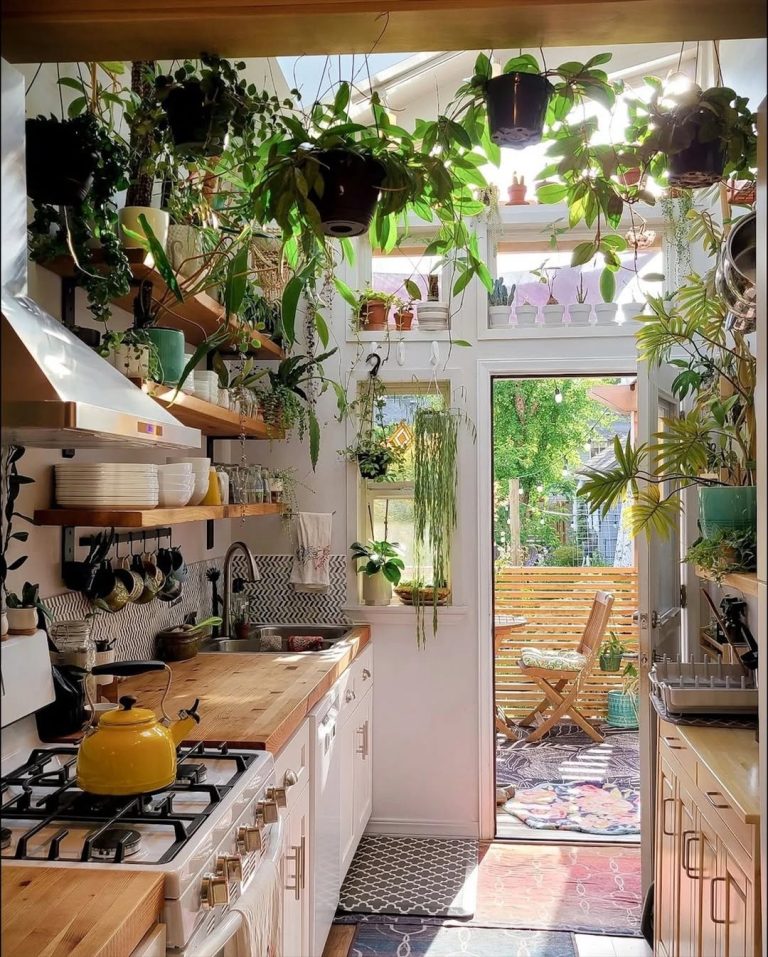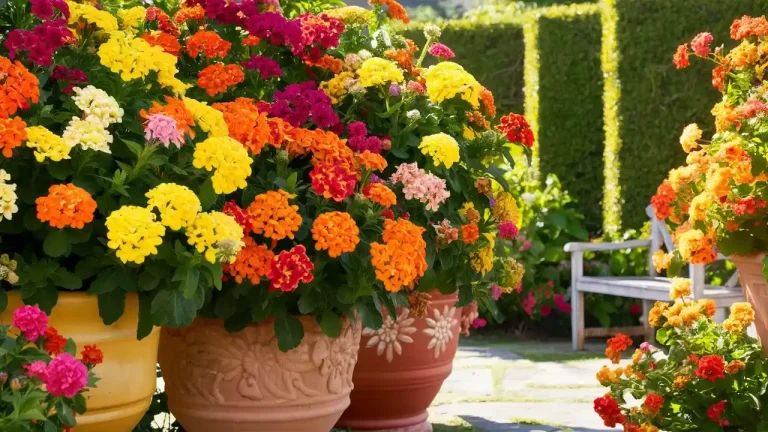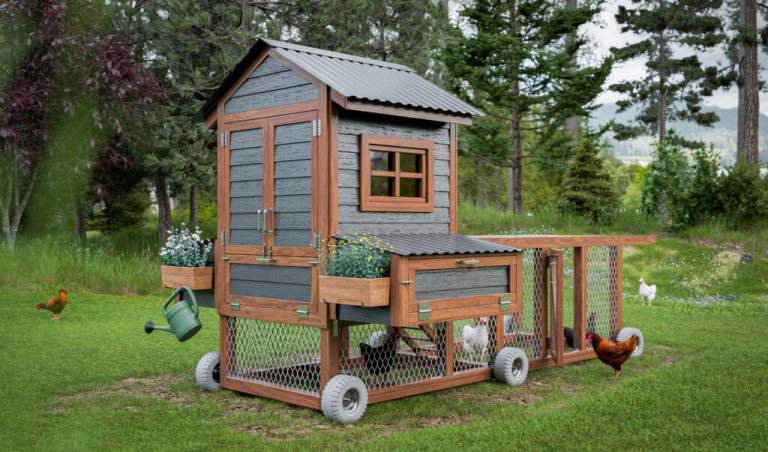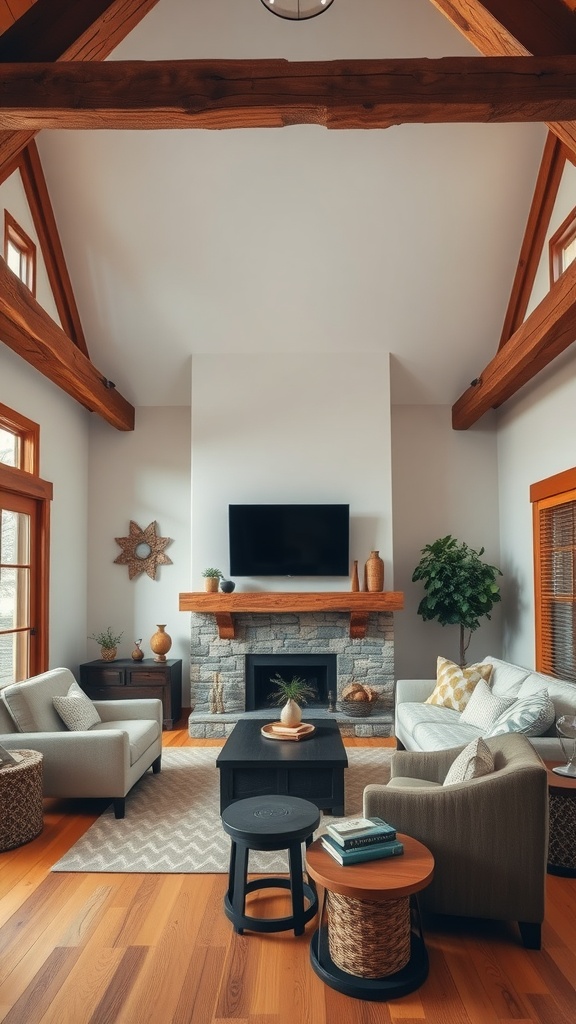19 Shade Garden Ideas to Transform Your Outdoor Space
Shade gardens offer a unique way to enjoy the outdoors without the intense heat of the sun beating down. Whether you have a naturally shady spot or need to create one, there are plenty of ideas to help you build a tranquil, lush retreat. From thoughtful plant choices to decorative accents, here are some creative shade garden ideas that will inspire you to design your own shaded haven.
1. Create a Woodland-Inspired Retreat
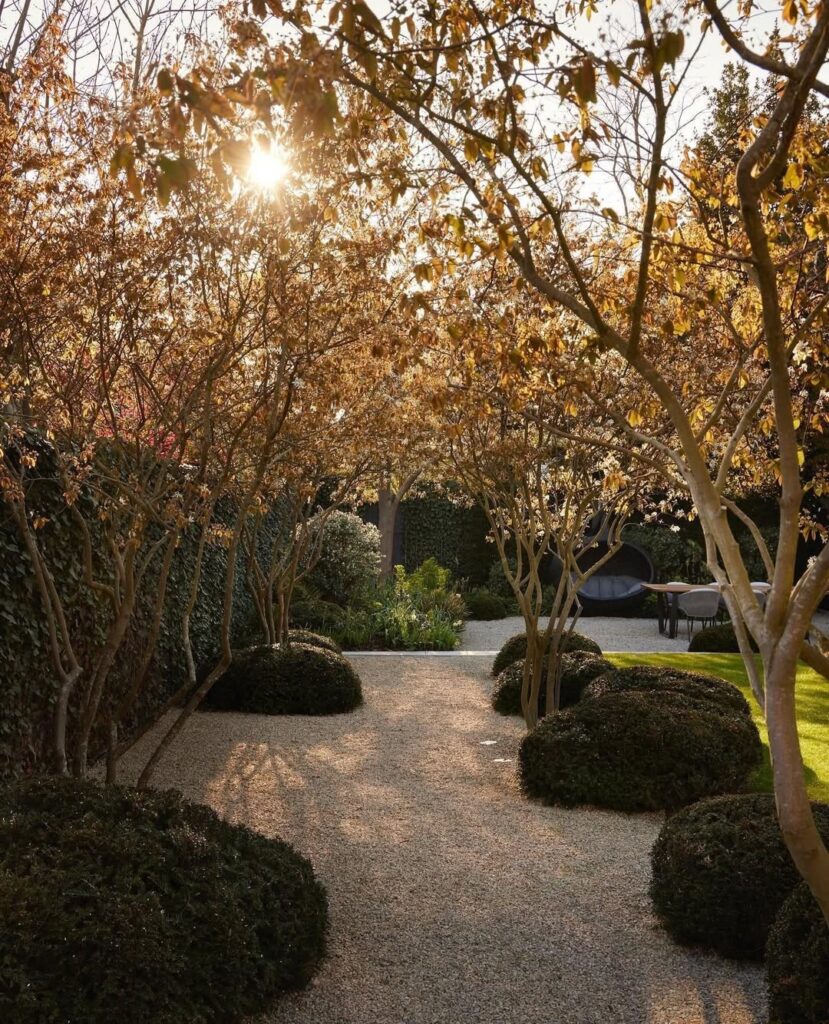
If you have a shady spot surrounded by trees, you can embrace the natural beauty of the space by designing a woodland-inspired garden. Start with layers of greenery, like ferns, hostas, and astilbes, which thrive in low light. Incorporating groundcovers like moss or creeping thyme can add a soft touch to the space. These plants not only look beautiful, but they also require little maintenance and add an earthy, calming vibe to your garden.
To enhance the woodland feel, consider adding rustic garden furniture or even a small water feature, like a birdbath or a gentle fountain, to add some peaceful sounds to the space. Use natural materials like stone or wood for pathways and seating areas, which will blend seamlessly with the surrounding plants. This type of garden offers a serene retreat perfect for quiet contemplation or enjoying a book.
2. Incorporate a Shade-Loving Flower Garden

Flowers aren’t just for sunny gardens! Many beautiful flowering plants thrive in shaded areas. Plants like begonias, impatiens, and astilbes can create a vibrant and colorful garden even in areas with limited sunlight. For a longer-lasting bloom, you can mix in some shade-tolerant perennials such as columbine, bleeding heart, or foxglove.
To add texture and dimension to your flower garden, vary the heights and colors of the flowers. Pair delicate blooms with larger, bushier plants to create a layered effect. Adding small stepping stones or a decorative garden arch can enhance the visual interest of your space and give it an extra touch of charm.
3. Build a Shady Seating Area
:max_bytes(150000):strip_icc():format(webp)/Mid-Century-Pergola-DIY-click-through-for-tutorial-1-1-1f5df9f500094138a4773d75b571919b.jpg)
A shaded seating area is the perfect way to enjoy your garden, whether you want to read, relax, or entertain guests. If you already have a tree canopy, this naturally creates a shaded spot. To enhance the comfort of the area, you can add outdoor furniture like cushioned chairs, a small table, or even a hammock.
Consider building a pergola or a trellis to create additional shade, or plant climbing vines like clematis, wisteria, or ivy to add greenery to the structure. You could also use large, leafy plants in decorative pots to surround the seating area and make it feel more secluded. Add outdoor lighting, such as lanterns or fairy lights, to create a magical atmosphere in the evening.
4. Design a Tranquil Water Feature
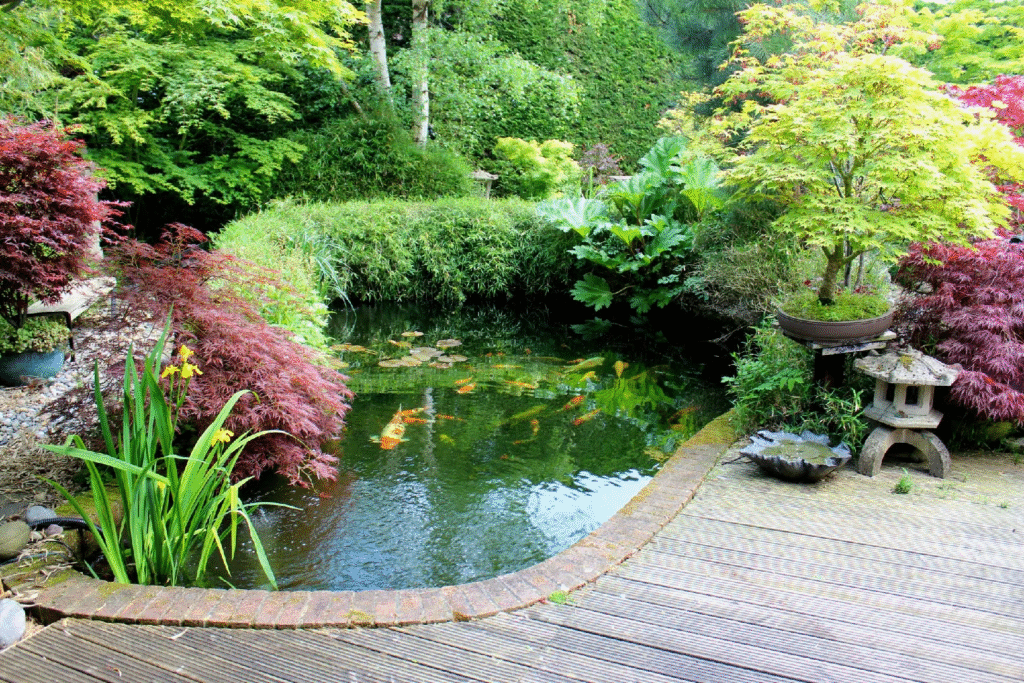

A water feature can be a stunning addition to any shade garden, bringing both visual interest and soothing sounds. Whether you opt for a small tabletop fountain, a koi pond, or a cascading waterfall, the sound of running water will enhance the tranquility of the space. Choose a water feature that suits the scale of your garden.
If you have a larger shaded area, a pond can be a great option. Surround it with plants like hostas, ferns, and water lilies to create a lush, peaceful scene. For smaller spaces, a fountain or birdbath will still provide that calming sound of water while fitting into the space more easily.
5. Add Shade-Loving Ferns
:max_bytes(150000):strip_icc():format(webp)/ms-ferns-primary-getty-13f53344c7c64567bf9e31b978843479.jpg)
Ferns are a perfect addition to any shady garden, as they naturally thrive in low light. There are many types of ferns to choose from, such as the popular maidenhair fern, Japanese painted fern, and the bird’s nest fern. They have a delicate, feathery texture that adds movement and visual interest to your garden.
Plant ferns in clusters to create a soft, natural border around your garden or as ground cover. Ferns also pair beautifully with other shade-loving plants like hostas and astilbes. Their airy, graceful appearance makes them ideal for filling in the gaps between larger plants and adding texture to your garden.
6. Introduce Shaded Pathways
:max_bytes(150000):strip_icc():format(webp)/GettyImages-480881432-b72db5738ec84d63b349d4660ded6aec.jpg)
A shaded pathway can guide visitors through your garden while offering a sense of exploration and discovery. Use natural materials like stone, gravel, or mulch to create the path, and plant shade-loving groundcovers such as moss, creeping thyme, or ajuga along the edges. You can also line the path with shrubs or small trees to create a tunnel effect.
Consider installing solar-powered lights along the pathway to illuminate the route at night. This not only adds beauty to the garden after dark, but it also helps create a magical, inviting atmosphere. If you have enough space, a winding pathway can make your garden feel more expansive and provide different views of your plants.
7. Create a Shady Herb Garden

If you love cooking, a shaded herb garden is a perfect addition to your outdoor space. Many herbs, like mint, parsley, cilantro, and chives, do well in partial shade, and they add both fragrance and flavor to your culinary creations. You can plant them in raised beds, containers, or even in a small section of your garden dedicated to herbs.
To maximize your space, plant herbs in varying heights, and combine them with other plants that also thrive in shade. Raised beds or containers are ideal for growing herbs in a small, manageable space, and they help keep your plants organized. Not only will this garden be functional, but the fragrant herbs will also enhance the beauty of your shaded retreat.
8. Design a Naturalistic Rock Garden

A rock garden can bring texture and contrast to your shady garden. Using a combination of large and small rocks, you can create a naturalistic landscape that complements the surrounding plants. Shade-loving plants like ferns, hostas, and astilbes work well in rock gardens, as they can thrive in the spaces between the rocks.
Incorporating moss or small flowering plants like toadflax or primroses into the crevices between rocks can create a lush, rustic look. This is also an excellent way to highlight the natural beauty of the rocks and create a low-maintenance, yet visually striking garden.
9. Use Shade-Tolerant Shrubs
:strip_icc():format(webp)/Sumac-bush-in-garden-c9a85bcd1e194442b22bc69a6b7ac6a8.jpg)
Shrubs are perfect for adding structure and form to a shade garden. Some popular shade-tolerant shrubs include azaleas, rhododendrons, and hydrangeas. These plants will provide year-round interest with their foliage and flowers, even in areas with limited sunlight.
Plant shrubs in groups to create a lush, full effect or use them as a backdrop for smaller plants. You can also plant them along fences or walls to create privacy and define the space. By selecting the right varieties, you can ensure that your shrubs bloom at different times of the year, providing your garden with continuous color and texture.
10. Install a Shade Canopy

A shade canopy or a fabric shade structure is a great way to protect your garden seating area from the sun while still allowing you to enjoy the outdoors. These structures come in a variety of styles, from simple sail shades to elaborate pergolas with retractable canopies.
By installing a shade canopy, you create a comfortable space to relax and entertain, even on the hottest days. For a more natural look, consider using plants like vines or climbing roses to cover the structure, adding an organic touch to the space. The canopy can also act as a focal point in your garden, drawing attention to the seating area and creating a sense of enclosure.
11. Plant a Hosta Garden
:max_bytes(150000):strip_icc():format(webp)/hosta-garden-design-ideas-5217830-hero-0b5a533b32504ffabb72fcf62e0038d5.jpg)
Hostas are the heroes of shade gardens. Their lush, oversized leaves bring rich color and bold texture to areas with limited sunlight. With varieties in shades of green, blue, and variegated white or yellow, hostas can transform a dull corner into a vibrant, layered oasis.
These perennials are low maintenance and thrive in moist, well-drained soil, making them ideal for garden beds, borders, or containers. For maximum impact, plant hostas in groups with contrasting leaf patterns and sizes. You can pair them with other shade lovers like ferns, heucheras, or astilbes for even more visual interest.
Hostas also play beautifully with hardscaping—nestle them near stone steps, garden statues, or along a shaded path. Even without flowers, their sculptural leaves bring drama and elegance to the landscape. Add a mulch layer to keep soil moist and enhance the tidy look of your garden bed.
12. Incorporate Hanging Shade Baskets

Don’t forget the vertical space in your garden—hanging baskets are a fantastic way to add color and greenery in shady spots, especially near porches, patios, and pergolas. Look for shade-loving plants with trailing growth, such as ivy, trailing fuchsia, torenia, or begonias.
Hanging baskets let you layer your garden visually, bringing beauty up to eye level and softening structures like eaves or posts. For best results, choose a well-draining soil and containers with good ventilation. Water regularly, as baskets tend to dry out faster than ground beds, especially during warmer months.
Try coordinating your basket plants with the color scheme of your outdoor living area or patio furniture. This helps tie the entire space together and adds a polished, intentional look to your back porch decor. It’s also an easy way to update your garden with the seasons—swap out blooms for fall foliage or winter greens as the year goes on.
13. Design a Secret Garden Nook
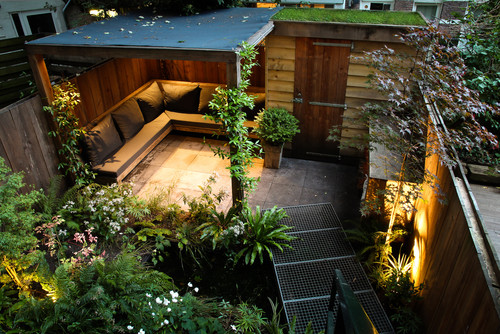
A shady garden is the perfect place to create a cozy, hidden nook—your own private escape from the world. Nestle a bench or a small bistro table set into a secluded corner, surrounded by tall ferns, shrubs, or flowering plants that offer natural privacy.
Think romance and mystery when designing your nook. Use a trellis or lattice wall partially covered in ivy or clematis for added seclusion. You can also place a weathered stone path leading to the nook to give it that “secret” feel. Add vintage or rustic elements like a wrought-iron bench, aged terracotta pots, or antique lanterns.
Not only does this type of nook offer a charming spot to relax or journal, but it also becomes a focal point in your shade garden—a delightful destination within your own backyard.
14. Build a Shade Garden Around a Tree
:strip_icc():format(webp)/curved-path-through-full-shade-garden-0c339a6b-d992867929f842b6b5d52006f54355d7.jpg)
Large trees provide natural shade—so why not design a garden that celebrates them? You can create a stunning garden bed that wraps around the base of a mature tree, using shade-loving groundcovers, perennials, and low-growing shrubs.
Choose plants that thrive with root competition and limited sunlight, such as vinca, sweet woodruff, coral bells, and ajuga. These fill in beautifully without overwhelming the space. Use mulch to help retain moisture and protect the tree’s root system.
Consider adding decorative accents, like a low bench that wraps around the trunk, or solar lanterns that dangle from the branches above. It’s a great way to maximize an area that’s often overlooked while turning your tree into a garden centerpiece.
15. Try a Moss Garden for a Soft, Peaceful Feel

If you’re looking for serenity and simplicity, a moss garden is a beautiful, low-maintenance solution for shady areas. Moss loves damp, shaded conditions and provides a lush, velvety carpet that’s soft underfoot and visually calming.
You can cover entire patches of soil with moss or use it as a filler between stepping stones and rocks. It’s ideal for areas where grass won’t grow, especially under trees or along shaded paths. Moss gardens are a staple of Japanese-style landscapes and pair well with water features, stone lanterns, and minimalistic seating.
Since moss doesn’t need mowing or fertilizing, it’s also incredibly eco-friendly and sustainable. Keep the area moist and free of debris for best growth, and avoid stepping on the moss too often to preserve its delicate appearance.
16. Install a Shady Trellis Garden
:strip_icc():format(webp)/white-wrap-around-trellis-outdoor-garden-00188805-017d6d02037a498e8ae30e6fafcff566.jpg)
A trellis adds structure and height to your garden—and it’s a perfect way to feature climbing plants that love the shade. Place one near your patio, against a fence, or as an entry arch into your garden. Then plant climbing vines like clematis, climbing hydrangea, or honeysuckle to create a wall of green.
Trellises can provide privacy, filter light, and enhance the overall aesthetic of your outdoor living space. For a truly charming touch, add twinkle lights or lanterns to your trellis for nighttime ambiance.
Not only do trellises provide support for plants, but they also help define garden zones. Use one to frame your seating area or mark the transition from your backyard to your garden. This vertical element adds both form and function to shaded spaces.
17. Add Art and Sculptures

Art pieces and sculptures bring personality and charm to shaded gardens. Since sunlight doesn’t dominate the area, you can use shade to your advantage by highlighting stone statues, ceramic pieces, or rustic metal sculptures in quiet corners where they won’t be overwhelmed by bright light.
Position sculptures where they peek through foliage or act as focal points along a winding path. Think bird statues, abstract forms, or whimsical gnomes—whatever matches your vibe. Add a decorative bench or a sundial nearby to complement the look.
For a more natural touch, incorporate driftwood or stacked stone sculptures. These blend beautifully with woodland or fern-heavy gardens and give your outdoor space a curated, intentional feel.
18. Create a Multi-Level Shade Garden
:strip_icc():format(webp)/curved-path-through-full-shade-garden-0c339a6b-d992867929f842b6b5d52006f54355d7.jpg)
Working with slopes or uneven terrain? Turn that challenge into a beautiful opportunity with a tiered shade garden. Use retaining walls, terraces, or stacked stone beds to create different levels. Each level can feature its own collection of shade-loving plants, adding depth and drama to your backyard design.
Multi-level gardens are not only visually striking—they also allow for better water drainage and plant arrangement. Plant taller shrubs or small trees at the back, mid-height plants in the middle, and groundcovers in front to create a cascading effect.
Add steps, railings, or a small stone stairway for easy access between levels. You can even carve out small seating nooks or water features into the design. A multi-level garden adds elegance and practicality to shaded spaces, making the most of every square foot.
19. Grow Edible Plants in Shade

Believe it or not, you can still grow food in the shade! While many vegetables need full sun, some edible plants actually prefer cooler, lower-light conditions. Leafy greens like lettuce, spinach, kale, and arugula all do well in partial shade. You can also try broccoli, radishes, and peas, which tolerate lower light levels.
Incorporate these into your landscape by using raised beds, vertical planters, or decorative containers. Not only are these vegetables healthy and homegrown, but their rich green foliage also blends beautifully with ornamental plants.
This idea is perfect if you’re looking to combine beauty and function in your outdoor living space. Plus, it supports a sustainable lifestyle by allowing you to harvest fresh produce just steps from your back door.
Conclusion: Embrace the Tranquility of Shade
Shade gardens are a true gift, offering cool, calming escapes filled with texture, color, and quiet beauty. With the right combination of plants, design elements, and thoughtful accents, even the shadiest corner of your yard can become a lush retreat.
Whether you’re building a seating area beneath the trees, designing a secret garden nook, or planting a vibrant mix of shade-tolerant blooms, there’s something magical about a space that offers peace and protection from the sun.
From practical uses like growing edible greens in containers to more aesthetic touches like trellises, moss gardens, and sculptures, these ideas will help you get the most out of your shaded areas.
So, grab your garden gloves, a cold drink, and start dreaming up your perfect shade garden. It’s the ultimate way to refresh your outdoor space—and yourself.

